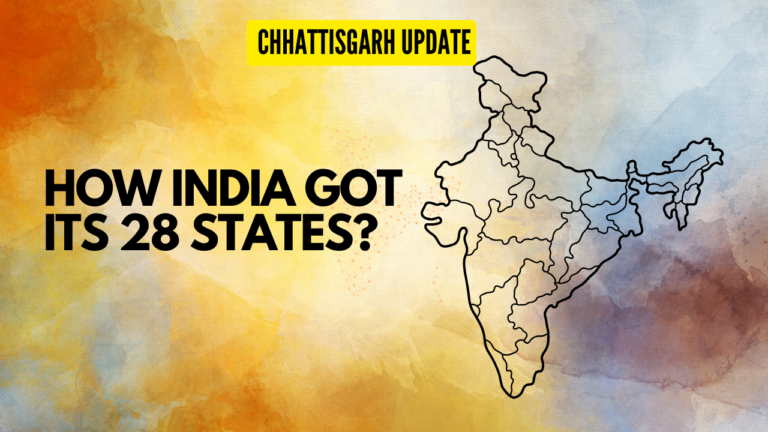Raipur district, nestled in the heart of Chhattisgarh, India, is a region teeming with history, culture, and natural beauty. With its administrative headquarters in the city of Raipur, this district is not only the most populous in Chhattisgarh but also one of its most resource-rich areas. In this article, we will delve into the historical legacy, geographical features, demographics, and vibrant culture of Raipur district.
History
Raipur district, like much of the Chhattisgarh plain, has a storied past dating back to ancient times. It was once known as Dakshina Kosala and was believed to be under the rule of the Maurya Empire. An inscription from the 6th century CE found in Arang near Raipur provides evidence of Gupta hegemony over the region during that era.
In the 7th century CE, the region was ruled by a Buddhist kingdom in Bhandak, which is in modern-day Maharashtra. This kingdom was described by the famous Chinese traveler Xuanzang in his writings. Later, a branch of this royal family migrated to Sirpur, in present-day Mahasamund district, and eventually established control over Dakshina Kosala. The kingdom reached its zenith under the rule of Tivaradeva, whose son was responsible for inscribing almost all the temples in Sirpur. However, this kingdom was eventually ousted by the Sharabpuriyas, who held sway over Chhattisgarh for several centuries.
In the early 9th century, the Haihayas or Kalachuris, who claimed descent from the Chedis, came to power in the region. The Haihaiya dynasty ruled Mughatunga, and its capital was established in Ratanpur, which is now in modern Bilaspur district. This dynasty’s territory included present-day Raipur. The Kalachuris were prolific temple builders, and many temples throughout their kingdom stand as a testament to their rule. Over time, their power waned, and by the 12th century, their realm was divided into fiefdoms ruled by minor princes within the family.
The Haihaiyas from the Raipur branch began to gain strength, with one of their kings conquering 18 forts of their enemies, giving rise to the name “Chhattisgarh,” meaning the ’36 forts.’ This dynasty ruled until the reign of Amar Singh Deva in 1741.
In the mid-16th century, Kalyan Singh, the ruler of Raipur, had an audience with Akbar, the Mughal emperor, and was rewarded with the title of Raja. This marked the first significant Muslim influence in Chhattisgarh, though it remained limited. By the early 18th century, the Kalachuris had become overlords of numerous divided chiefdoms but with little authority. In 1740, the Maratha general Bhaskar Pant invaded the region, leading to the downfall of the Kalachuris. Raghunath Singh, the last independent ruler from Ratanpur, did not put up much resistance, and the Marathas assumed control. Subsequently, Raghunath Singh ruled as a Maratha vassal.
In 1745, Raghunath Singh passed away, and Pant installed Mohan Singh, a loyal Maratha vassal from the dynasty, as the ruler. Bhimbaji succeeded Mohan Singh and ruled Raipur with Maratha support. However, Bhimbaji’s brother Venkoji, who followed him, was more interested in Nagpur court politics than administration. Real governance of the region fell to Bhimaji’s widow, Anandi Bai, and a council of ministers. After her death in the early 19th century, the region was ruled by a series of governors, often exploiting their positions for personal gain. Following the Third Anglo-Maratha war in 1818, a British colonel administered the region. According to British accounts, the people of Raipur were ‘oppressed’ by the Marathas, especially due to the pindari raids. In 1830, the region returned to the rule of subahs from Nagpur, but Raipur remained remote and had limited contact with the central government. This status quo continued until the annexation of Nagpur under the Doctrine of Lapse in 1854.
Amar Singh, the ruler of Raipur, continued to govern without Maratha interference until 1750. After his death, the Maratha government briefly confiscated his holdings but later returned them to his son, whose family retained revenue rights until Independence.
Geography
Raipur district is situated between 22° 33′ N to 21°14′ N Latitude and 82° 6′ to 81° 38′ E Longitude. It occupies the southeastern part of the upper Mahanadi River valley, with bordering hills in the south and east. The district is located on the Chhattisgarh plain, and the areas near the hills were separated when the district was trifurcated.
The district shares its borders with Baloda Bazar district to the north, Mahasamund district to the east, Gariaband and Dhamtari districts to the south, and Durg and Bemetara districts to the west. The Mahanadi River is the principal river in this district, shaping its landscape and providing vital water resources.
Divisions
Raipur district is administratively divided into four Tehsils and four development blocks. It comprises one Lok Sabha Constituency (Raipur) and nine Vidhan Sabha (Chhattisgarh Assembly) constituencies. The chief crop of this region is paddy, and there are over 50 large and medium-scale industries in the district, providing employment to more than 10,000 people.
Demographics
Raipur district is a melting pot of cultures and religions. According to the 2011 census, Hinduism is the dominant religion in the region, with 93.13% of the population adhering to it. Other religions represented in the district include Islam (4.06%), Christianity (0.85%), Jainism (0.74%), Sikhism (0.73%), and various other or unspecified beliefs (0.49%). Scheduled Castes and Scheduled Tribes constitute 16.60% and 4.30% of the population, respectively.
The 2011 census reported a population of 2,160,876 in Raipur district, making it the 211th most populous district in India. The district has a population density of 750 inhabitants per square kilometer, with a growth rate of 34.65% over the decade from 2001 to 2011. The sex ratio in Raipur stands at 983 females for every 1000 males, and the literacy rate is 76.43%. Approximately 59.08% of the population resides in urban areas.
Languages
The linguistic diversity of Raipur district adds to its cultural tapestry. According to the 2011 Census of India, several languages are spoken in the district. Chhattisgarhi, a regional language, takes the lead with 61.77% of the population using it as their primary language. Hindi is spoken by 25.16% of the population, followed by Odia (3.23%), Sindhi (1.94%), Marathi (1.33%), Bengali (1.28%), and Urdu (1.01%) as other significant languages in the region. Bhunjia, spoken by approximately 7,000 Bhunjia Adivasis, adds to the linguistic diversity of the district.
Culture
Chhattisgarhi, the local language, is the common mode of communication in Raipur district. The region’s cultural identity is enriched by various musical styles and dance dramas, including Raut Nacha, Dewar Nacha, Panthi & Soowa, Padki, and Pandwani. Pandwani, in particular, is a renowned musical form used for narrating the stories of the Mahabharata in this region.
Traditional attire plays a significant role in the cultural fabric of Raipur. Women often adorn ‘Kachhora,’ a distinctive style of draping sarees. The traditional attire includes ‘Lugda’ (saree) and ‘Polkha’ (blouse) paired with sets of ornaments that symbolize the heritage of Chhattisgarh. These ornaments include ‘Baandha’ (a necklace made of coins), silver necklaces, ‘Phuli’ (nose rings), ‘Bali’ and ‘Khuntis’ (earrings), ‘Ainthi’ (a silver forearm ornament), ‘Patta’ and ‘Choora’ (bangles), ‘Kardhani’ (a silver waistbelt), ‘Pounchhi’ (an upper arm ring), and ‘Bichhiya’ (toe rings). Men also embrace ornamentation with ‘Koundhi’ (necklaces made of beads) and ‘Kadhah’ (bangles) during festive occasions.
Raipur district celebrates a host of festivals, each marked by its unique rituals and fervor. Some of the prominent festivals in the area include:
Hareli: Celebrated in the month of ‘Shravan,’ Hareli is a festival that signifies greenery and agricultural prosperity. Farmers worship their farm equipment and cows on this occasion. They place branches and leaves of the ‘Bhelwa’ tree in the fields and offer prayers for a bountiful crop. To prevent seasonal diseases, small Neem branches are hung at the main entrances of houses during Hareli. Additionally, Baigas, a tribal community, use this festival to impart medicinal knowledge to their disciples.
Pola: Another significant festival is Pola, during which bullocks are worshipped. Bull racing is a major highlight of this festival. Children participate in traditional games, including playing with Nandia-Bail idols made of clay.
Teeja: Teeja is a women-centric festival where married women pray for the well-being of their husbands. Women return to their parents’ homes to celebrate this festival in a festive and devotional spirit, fostering a sense of togetherness and social harmony.
Apart from these, various art forms and cultural practices, such as Raut Nacha and Pandwani, continue to thrive and enrich the cultural heritage of Raipur district. The town of Champaran, located in the district, holds religious significance as the birthplace of Saint Vallabhacharya.
Conclusion
Raipur district stands as a testament to the rich historical legacy, geographical diversity, linguistic variety, and vibrant culture of Chhattisgarh. Its journey from ancient kingdoms to modern-day prosperity reflects the resilience and spirit of its people. As visitors explore this district, they are greeted by a tapestry of traditions, festivals, and customs that beautifully define the essence of Raipur and its people.
Whether one is drawn to its historical landmarks, natural landscapes, or cultural festivities, Raipur district offers an enriching and captivating experience for all who venture into its heartland.




